Do we really need to burn the bushes? 30 years of the Kidman Springs Fire Experiment, NT
Savannas are adapted to frequent fires. Removing fire can lead to woody thickening, turning open grasslands to less productive (for cattle grazing) woodlands. We have been monitoring the impacts of frequency and season of fire on pastures and woody plants at our long term fire experiment on Kidman Springs since 1993. After all this time the research is still teaching us new things.
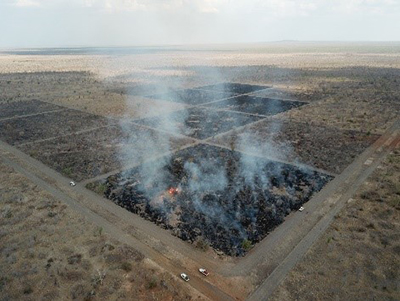
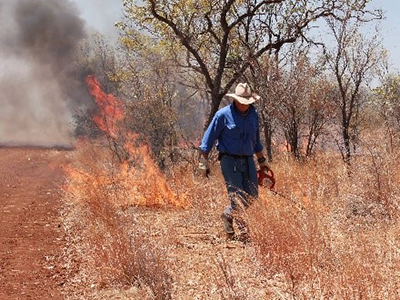
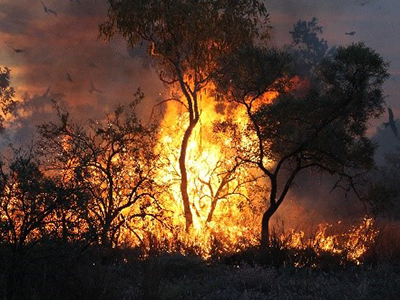
Using fire for managing woody plants
Trees and shrubs naturally increase in wetter times and die back in extended dry periods. We found that regular fire helped to dampen increases in woody cover.
- Regular 4 yearly fire helped to manage woody plants.
- More frequent 2 yearly fire was unnecessary and sometimes bad for pasture condition.
- Less frequent 6 yearly fire was less effective in managing woody cover, because trees could grow up out of the flame height between burns
- On the grassland early dry season fire (June) was as effective as late dry season fire (October) for managing woody plants (Figure 2).
- On the woodland, only late dry season fire was effective (Figure 2).
Woody plant death after the dry years of 2019 and 2020
Higher than average rainfall has driven increases in woody plant cover since the early 1990s. But after two consecutive dry years at Kidman in 2019 and 2020 there was a wide scale decline of woody plants (Figure 2).
- Woody cover halved on the red soil, with declines on unburnt areas almost as much as on burnt areas
- On the grassland, tree and shrub cover only declined on burnt areas
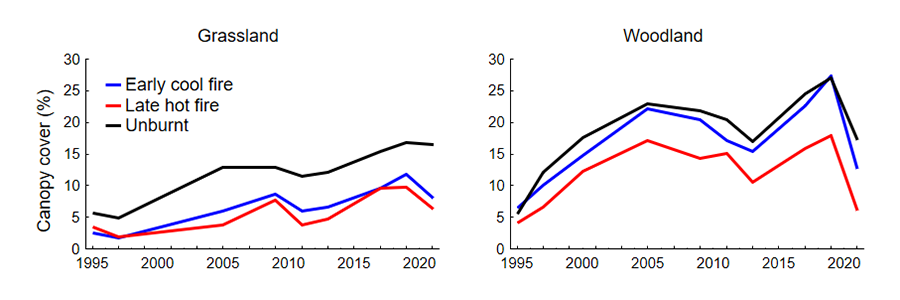
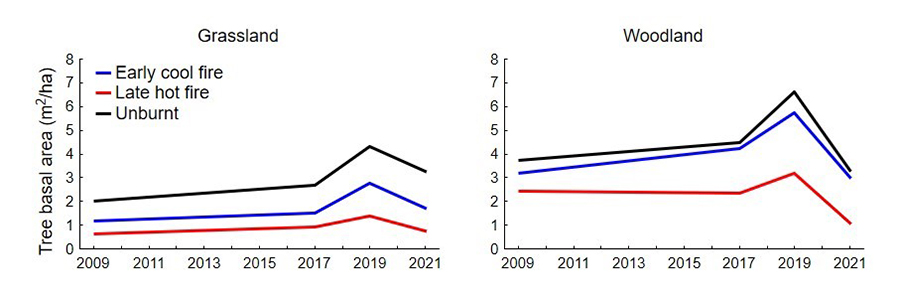
Do woody plants matter?
Increases in woody plants don’t really matter unless their cover reduces the growth of grass. At the fire experiment we found that trees did not reduce pasture growth on the red soil as much as on grasslands. Hence burning your grasslands is likely to result in the largest increase in carrying capacity.
How to get the best bang for your burning buck
Burning your productive black soil grasslands may give you the greatest return on investment, because it helps to manage woody plants and keep pastures productive. The use of fire on other land types can be useful for evening grazing distributions and improving their pasture quality.
Burning woodland every 4 years late in the dry season will help to manage trees and shrubs, but for grasslands, early dry season fire is also effective. You may need to spell before burning to ensure fuel loads are enough for an effective fire. Keep cattle off burnt areas over the next wet season to promote the recovery of palatable perennial pastures. To reduce dense fast growing wattles you may need to burn again within four years before new recruits mature and start seeding.
